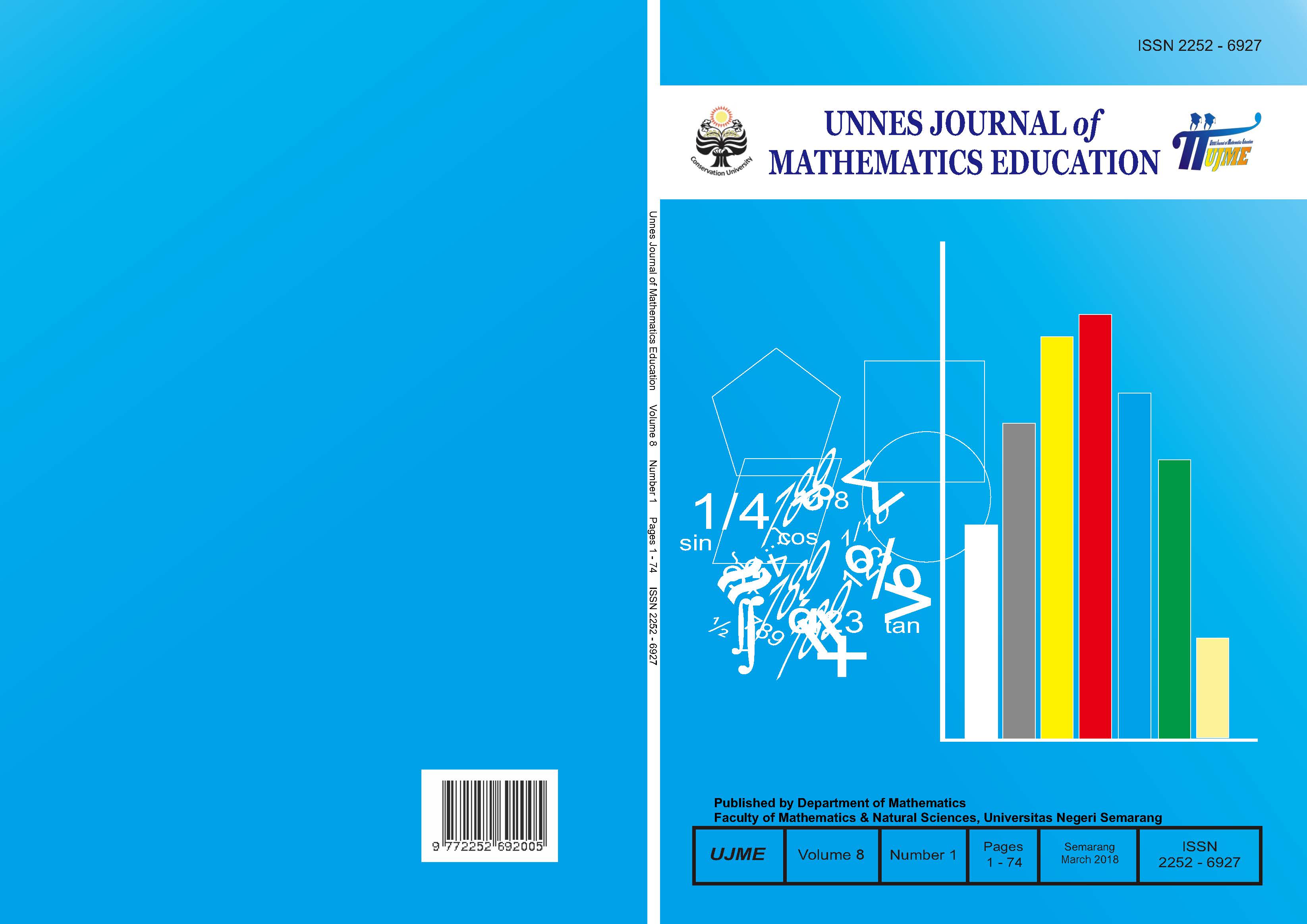The ability of mathematical problem solving reviewed from goal orientation to learning model of problem based learning assisted by problem card
##plugins.themes.academic_pro.article.main##
Abstract
The aims of this study are to prove the problem solving abilities of students in the application of Problem based learning (PBL) models assisted by problem cards to achieve classical completeness. The research used mixed method. The sample in this study were students of class VII D and VII E. Quantitative data was done by simple random sampling technique. Quantitative data was obtained using tests. Qualitative data analysis is the analysis of interview data. The results showed that (1) problem solving ability of 7th grade students achieving classical completeness; (2) problem solving abilities of students with PBL models assisted by problem cards reach the Minimum Completeness Criteria; (3) the proportion test results of students' in experimental class is better than students in control class. (4) the average test results of students in experimental class are better than the average results of students in control clas; (5) students in the mastery goal group meet the indicators of problem solving abilities while the students in the performance goal group have not met the indicators of problem solving abilities
##plugins.themes.academic_pro.article.details##
References
Mattern, R. A. (2005). “College Students’ Goal Orientations and Achievementâ€. International Journal of Teaching and Learning in Higher Education. 17(1): 27-32.
National Council of Teachers Mathematic (NCTM). (2000). Principles and Standards for School Mathematics. Amerika: The National Council of Teachers of Mathematics, Inc.
Angkotasan, Nurma. (2014). Keefektifan Model Problem Based Learning Ditinjau dari Kemampuan Pemecahan Masalah Matenatis. Jurnal Matematika dan Pendidikan Matematika, 3(1).
Padmavathy, R.D, Mareesh.K. (2013). Effectiveness of Problem Based Learning In Mathematics.International Multidisciplinary e-Journal, Vol 2(1).
Polya, G. 1973. How to Solve It. New Jersey : Princeton University Press.
Puspitasari, Agustin, Susi Setiawan dan Nurcholif Diah Sri L. (2015).Analisis Kemampuan Literasi Matematika Siswa Kelas X MIPA 5 SMANegeri 1 Ambulu Berdasarkan Kemampuan Matematika (The Analysis of Student's Mathematical Literacy of X MIPA 5 Grade at SMA Negeri 1 Ambulu Bassed on Mathematical Ability).
Sugiyono. (2016). Metode Penelitian Kombinasi (Mixed Methods). Bandung: Alfabeta.
